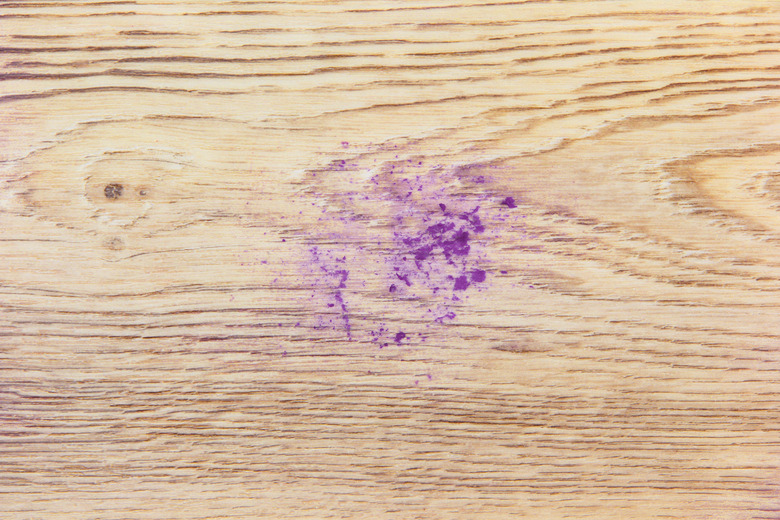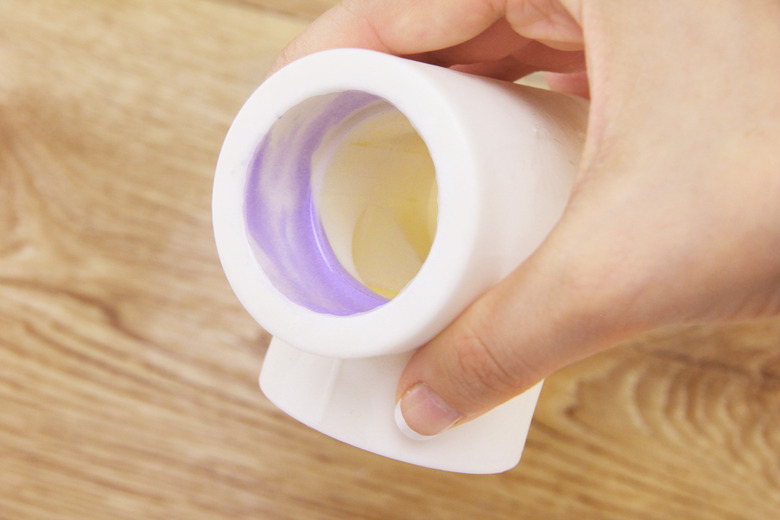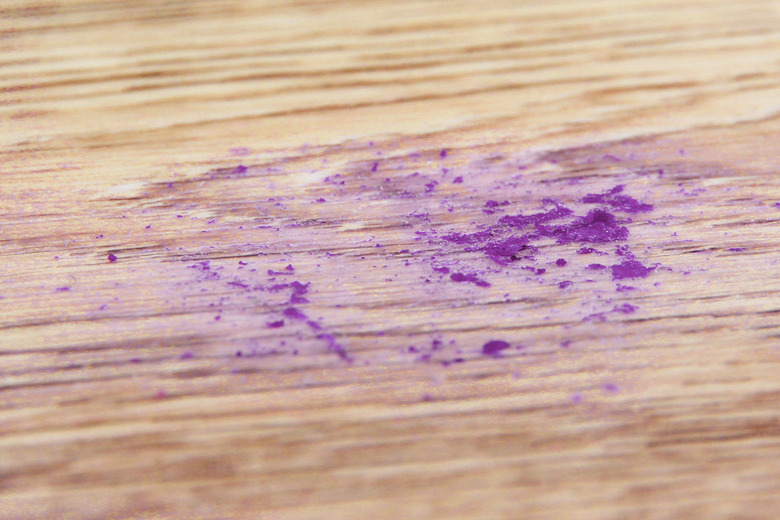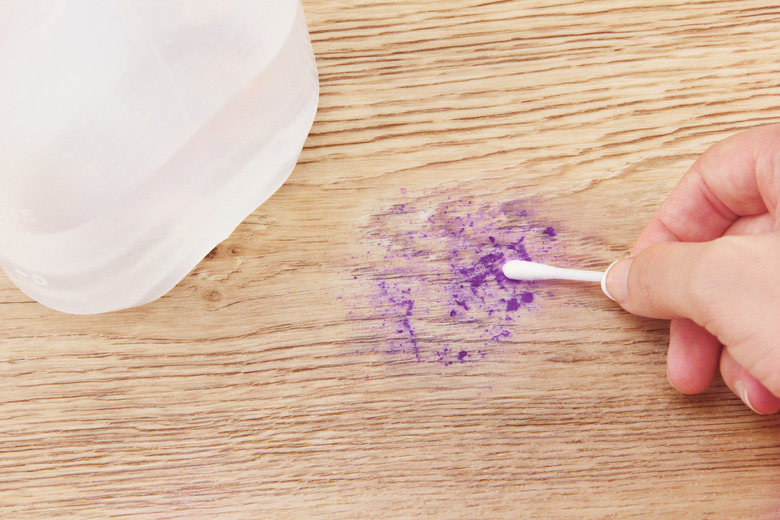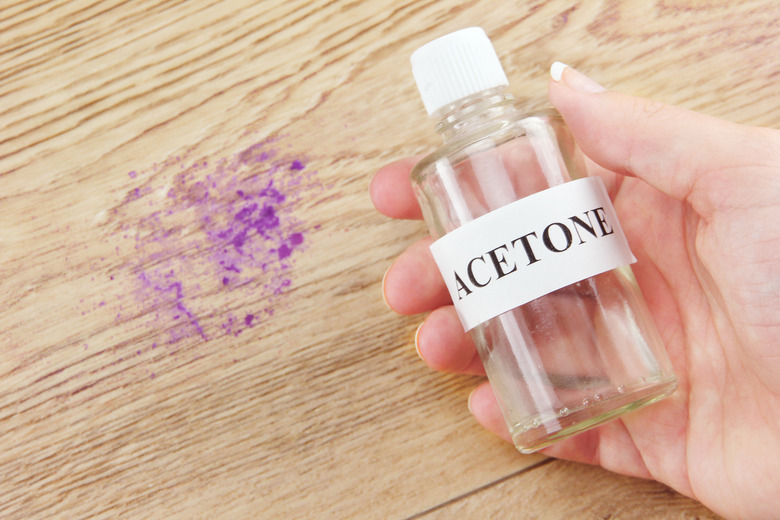How To Remove The Purple PVC Primer From A Vinyl Floor
It probably wasn't your fault — it could have been the fault of the plumber or the neighbor who offered to fix your sink pipes — but a purple primer spill on your vinyl floor is a major deal. The problem is that purple primer is designed to permanently etch PVC pipes, and PVC is exactly the material from which vinyl flooring is made. Take a deep breath — there may be a way out.
That Telltale Purple Color
That Telltale Purple Color
Plumbers use purple primer to prepare PVC pipes for gluing; it cleans the pipe surface and dulls the finish to ensure that the glue will make a permanent bond. Clear primers are available, but plumbers often prefer the purple variety because the discoloration is a sign of assurance that the primer was properly used, as required by code, and inspectors often look for it. One of Murphy's Laws states, however, that wherever you leave a a partially opened can of purple primer, a spill will occur, which is a good reason for insisting that plumbers use clear primer when doing repairs in your house.
The Problem With PVC Primer
The Problem With PVC Primer
The powerful solvents in PVC primer include acetone and methyl ethyl ketone, which both melt plastic. If you were to immerse a PVC pipe — or your vinyl flooring — in either solvent, it would eventually dissolve. Both solvents are extremely volatile and evaporate long before any significant damage occurs, but they permanently change the character of the plastic surface, and the discoloration caused by the dye becomes part of the change. If you remove a spill soon after it happens, little color may remain. Once the solvent has evaporated, the only way to remove the color, short of sanding, scraping or grinding, is to soften the plastic surface with a clear product containing similarly strong solvents.
Use Clear Primer or Clear Cleaner
Use Clear Primer or Clear Cleaner
One way to approach the problem is to dab the stain with clear primer or clear cleaner, which is a product designed to clean pipes in preparation for priming. The procedure calls for delicacy: You can neither wipe off the stain, or the floor finish will come with it, nor can you douse the stain, or you'll end up with a hole. Instead, moisten a cotton ball or cotton swab and dab gently, removing a small amount of the dye with each dab. You may be able to eventually remove all the color, as long as the primer hasn't had time to penetrate too deeply.
Alternative Cleaning Methods
Alternative Cleaning Methods
In lieu of purchasing a can of clear cleaner or primer, you can also attack the stain with acetone, acetone-based nail polish remover or methyl ethyl ketone, which you may have in your paint cupboard. Use these solvents with the same caution you would use with a pipe cleaning product. You may also have success with mineral spirits or paint thinner; since neither melts plastic, you can use them in conjunction with some elbow grease. If you prefer natural, non-volatile cleaners, make a paste with baking soda and water and rub the stain with an abrasive sponge.
